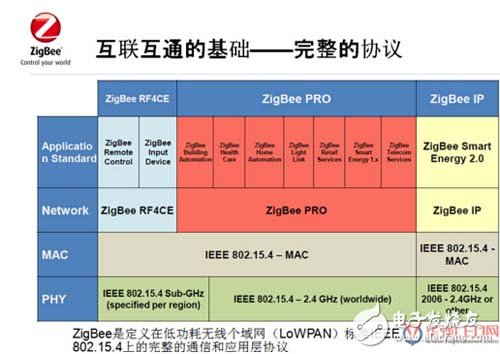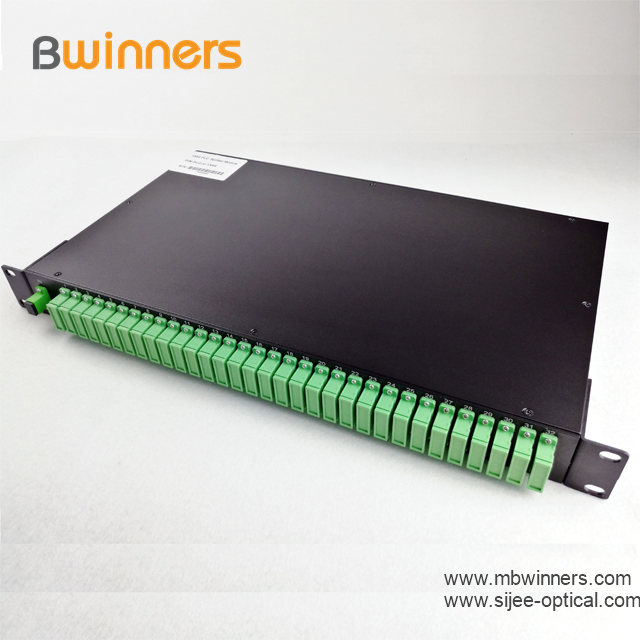The emergence of ZigBee technology completely solved the problem of network transmission in the last 100 meters of smart home. Zhu Jungang, chairman of Nanjing IOT, said that ZigBee technology is a kind of wireless technology. The last 100 meters of ZigBee's solution status in smart homes does not mean that ZigBee will replace WiFi or Bluetooth. Each wireless technology has market positioning.
Zhu Jungang believes that ZigBee has certain security. As of today, ZigBee technology has not been set a precedent in the world. Some people or peers and even competitors will say that ZigBee is safer so far because its current utilization rate is not high and its market share is not high, but we must know that the ZigBee network was originally applied in the industrial field, and the industrial field. The value of the data is very sensitive to many people. The peers will try to get the data, so it is better to say that it will be better, but there have been no such cases. Second, ZigBee has self-healing capabilities. Because it is a mesh network, if a device is broken or the node is broken, the following devices will automatically find other nodes and automatically form a network. The third is that its network size is relatively large. Will carry the future application of the family. The fourth is its low power consumption, and as the chip manufacturing capabilities increase, its power consumption will be lower and lower.
The emergence of intelligent lighting is accompanied by the development of technologies such as Internet of Things, LED lighting, and wireless communication. Its typical feature is the individually controllable, convenient and flexible scene setting of lighting equipment, and can be seamlessly interfaced with other intelligent information systems (such as Intelligent sensor network, security monitoring network, intelligent energy network, etc., to meet different intelligent lighting needs with novel rendering mode. Therefore, intelligent lighting system needs to provide convenient and easy-to-operate system upgrade and transformation plan to adapt to the changing needs. The low-power wireless communication control system is one of the key links.
As an important part of smart engineering, intelligent lighting is also a good application form in the Internet of Things system. The intelligent lighting solution based on low-power wireless transmission will be the future development trend. The current market environment is becoming more and more mature, and the establishment of relevant standards will be the boost to promote the development of the intelligent lighting market.
At present, there are many protocols used in the field of low-power wireless transmission, and a unified transmission specification has not yet been formed. The following is an example of the comparison of two current mainstream low-power wireless transmission protocols, Zigbee and Jennet-IP, to analyze the characteristics and development direction of low-power transmission protocols.
1, Zigbee agreement
The Zigbee protocol is characterized by small size, low cost, low power consumption and low transmission rate. It was jointly proposed by Motorola (USA), Mitsubishi (Japan), Philips (Netherlands), Invensys (UK) and other companies in 2002. Developed low-power wireless communication protocol.
The network layer and media access layer of the Zigbee protocol use the IEEE802.15.4 protocol as the protocol standard, and the IEEE 802.15.4 protocol is the IEEE 802 Wireless Personal Area Network (WPAN, Wireless Personal Area Network) group (established in December 2000) in 2003. Officially released in December, including the protocol standards adopted by its physical layer and MAC layer. The Zigbee Alliance released the Zigbee wireless communication protocol by defining the network layer and the application layer based on the physical layer (PHY) and the medium access layer (MAC) defined in IEEE802. 15.4 in December 2004.

(1) The main application features of the Zigbee wireless communication protocol are as follows:
1 low power consumption: Compared with other wireless network protocols, Zigbee protocol devices have very low power consumption, so the device life is extended a lot;
2 High reliability: The Zigbee protocol has a collision avoidance mechanism. By adopting a dedicated time gap method, collisions in the process of transmitting data are avoided. In addition, an automatic routing mode is adopted in the transmission to improve transmission reliability.
3 low transmission rate: Zigbee protocol supports transmission rates ranging from 10kb/s to 250kb/s;
4 transmission delay is small: Zigbee protocol optimizes the application with high time delay requirement, which shortens the communication delay greatly. In addition, the time for Zigbee protocol device to activate from sleep state is also reduced a lot;
5 Supported nodes are numerous: In theory, the Zigbee protocol network can support up to 65,000 nodes;
6 Security: The Zigbee protocol can provide corresponding security mechanisms for specific application needs. The AES.128 algorithm is used to protect data in CCM mode.
(2) The overall structure of the Zigbee protocol mainly includes the physical layer (PHY), the medium access layer (MAC), the network/security layer, and the application framework layer.
The 1 PHY layer is mainly responsible for controlling the opening and closing of the wireless transceiver, channel selection, energy detection, link quality, sending and receiving data packets through physical media, and the like;
The 2MAC layer is mainly responsible for channel access, transmission acknowledgement frame, time slot management, beacon management, transmission connection, and disconnection request. In addition, it provides support for appropriate security mechanisms, such as collision avoidance carrier sense multiple access. (CSMA-CA), time synchronization beacon optional superframe structure;
3 security layer is mainly responsible for key management, access and other functions;
4 network layer is mainly negative LR-WPAN network networking, data, etc.;
5 The application framework layer is mainly responsible for providing application software interfaces (APIs) to implement device management at the application layer. In addition, the application layer can also provide an application framework model for practical applications in order to develop applications.
2, Jennet-IP protocol
Developed by NXP Semiconductors, Jenne t-IP is an enhanced 6LoWPAN network layer protocol designed specifically for ultra low power networks based on the IEEE 802.15.4 standard for residential and industrial applications. Jennet-IP has been adopted by major customers such as IBM and TCP. Currently, Jennet-IP is widely used in smart home, A/V RF remote control, intelligent lighting, home smart medical, security fire protection, access control, and smart energy. 6LoWPAN, IPv6 over IEEE 802.15.4, formerly known as IPv6 over Lowpower Wireless Personal, is a low-speed wireless personal area network standard. As a network layer interconnection scheme, 6LoWPAN technology has attracted widespread attention, and many wireless networking solutions have integrated 6LoWPAN.
Because Jennet-IP is an IP-based solution with excellent scalability to support large networks of up to 500 devices, it has great potential for development; it can operate with or without gateway support; Jennet -IP integrates many features in one, supports IPv4, Ipv6, Zigbee multiple protocols, compatible with 6LoWPAN, with low power consumption, large RF range, small storage space and low cost.
Jennet-IP is based on NXP's Jennet network protocol stack and has high security performance. It can provide 128-bit AES encryption algorithm and device join function. It was released in 2011 as an open source license. The main feature of Jennet-IP is that it is based on the IP protocol, conforms to the IEEE, IEFT standards, meets the requirements of low-power, low-cost large-scale node networks, and can form with wireless devices and public network IP. Seamless link is the representative of the more mature 2.4GHz solution. It can coexist with Wi-Fi and Bluetooth and has a common API interface.
The main features of Jennet-IP include:
(1) Support gateway or no gateway operation, can be connected to the Internet or perform stand-alone operation;
(2) Ultra-low standby power consumption, support routing layer optimization technology, low-power wireless link;
(3) High security 128-bit AES encryption, security verification and device joining, reliability;
(4) The kernel is small, low memory usage, less than 128 bytes, low cost, open source authorization;
(5) Popularity: Jennet-IP uses IPv6 in LR-WPAN network. Based on the wide application of IP network, IPv6, which is the core technology of next-generation Internet, is more likely to be integrated in different fields.
(6) Strong applicability: IP network protocol framework is currently widely recognized. The new generation internetwork is also based on IP network protocol. Therefore, the LR-WPAN network incorporating IPv6 protocol has stronger adaptability, development and application. Simple
(7) More address space: The LR-WPAN network using IPv6 can provide a huge address space. This is the need for large-scale, high-density, low-power wireless network equipment;
(8) Automatic address matching: When the node is in the active state, the node belonging to the IPv6 network can read its own MAC address and convert it into the IPv6 address of the node according to the established rules. This feature is very important for wireless sensor networks because In general, for large-scale wireless sensor network nodes, the interface configuration is not performed in the pit, so the node can perform network configuration by itself, which will fundamentally improve the value of practical application;
(9) Easy access: With the IPv6 LR-WPAN network, the difficulty of accessing other IP networks will be greatly reduced. With the development of the next generation Internet, different networks can make full use of all resources in the IP network;
(10) Ease of development: With the development of a new generation of IP networks, IPv6-based application technologies have gradually matured. With the LR-WPAN network of IPv6, it is easier to integrate mature technologies and greatly simplify the development of protocols.
The PLC splitter is used to separate or combine optical signals. A PLC is a micro-optical component based on planar lightwave circuit technology and provides a low-cost light distribution solution with the small form factor and high reliability.
Rackmount Splitter is manufactured using silica glass waveguide circuits that are aligned with a v-groove fiber array chip that uses ribbon fiber. Once everything is aligned and bonded, it is then packaged inside a miniature housing. PLC splitter has high-quality performance, such as low insertion loss, low PDL, high return loss, etc.
Advantages
Suitable for multiple operating wavelengths (1260nm – 1650nm); unstinted.
Equal splitter ratios for all branches.
Compact configuration; smaller size; small occupation space.
Good stability across all ratios.
High quality; low failure rate.


Rackmount Splitter,Fiber Optical Splitter Rackmount,1U Rack Mount PLC Splitter,PLC Fiber Optical Splitter
Sijee Optical Communication Technology Co.,Ltd , https://www.sijee-optical.com